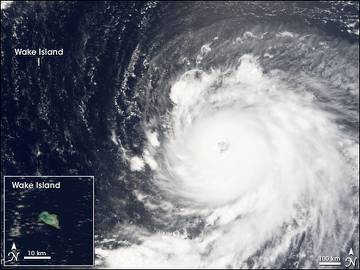Friday Topsight, September 1, 2006
 Lots of items backed up here.
Lots of items backed up here.
• Hype Scorecard: Author Sharon Weinberger, subbing at the Defense Tech website, offers up a checklist helping the gentle reader to figure out whether a weapon proposal is actually a stupid idea. As I read through the list, however, it struck me that nearly every item on the checklist would work just as well if "weapon" were replaced with nearly any kind of technology -- and energy technology is a particularly well-suited to this scorecard. Does the technology promise a revolution? Does it lack a realistic scenario of how it would be used? Does it rely on Powerpoint instead of engineering details to prove reality? Does it violate known physical laws?
Hmm. I wonder what piece of recent hype might fare poorly under this checklist?
• SuperTyphoon: The nasty heat of this summer prompted a variety of global warming "skeptics" to rethink their position. Unfortunately, conversion by anecdote leaves one vulnerable to new anecdotes, and I'm now starting to see claims that this year's relatively calm Atlantic hurricane season disproves that there's an ongoing climate disaster. Except... hurricanes happen in more places than the Gulf of Mexico and the western Atlantic. This year's Pacific storm season is quite alarming. SuperTyphoon Ioke did what few Pacific hurricanes do, cross from the Eastern to the Western Pacific, and now threatens Tokyo. As the name suggests, SuperTyphoons are not terribly common, and Ioke, at its peak, was massive -- fortunately, the winds have died down a bit, and it may be "only" equivalent to a Category 3 hurricane when it slams into Japan.
• Bottom-Up Tsunami Warnings: People in Sri Lanka, upset because the official tsunami warning centers haven't yet come online, have put together a very unofficial -- but potentially very useful -- collaborative tsunami warning system.
...residents in the southern town of Peraliya, where around 1,000 people died when a passenger train was swamped by the tsunami and dozens of locals were swept to their deaths, have taken matters into their own hands.Waduthantri and seven residents take turns to monitor the airwaves, cable television channels and earthquake warning Web sites around the clock at their own Community Tsunami Early Warning Centre.
The centre, set up with private donations from foreign nationals, is sandwiched between ramshackle temporary shelters and the ruins of homes. [...]
"We feel safe now, because the people in this centre are continuously monitoring, and the lights are on 24 hours," said 63-year-old grandmother L.H. Aryawathi, who lives in a small shack wrapped in plastic sheeting donated by the United Nations.
"These children are monitoring all day and informing us if there is any threat. Otherwise I wouldn't settle here by the sea," she added, as waves crashed onto the beach across the road.
Unsurprisingly, the government is unhappy with this ad hoc effort, and has declared the program illegal.
• The Carlson Curve: My friend Rob Carlson is a biologist working on synthetic biology at the University of Washington, and is hard at work on a new book. He was a bit surprised, however, to find himself cited in the latest Economist for a paper he wrote a few years ago. But it wasn't just the citation that was a bit startling -- it was how his name was used:
Dr Carlson is a researcher at the University of Washington, and some graphs of the growing efficiency of DNA synthesis that he drew a few years ago look suspiciously like the biological equivalent of Moore's law. By the end of the decade their practical upshot will, if they continue to hold true, be the power to synthesise a string of DNA the size of a human genome in a day.At the moment, what passes for genetic engineering is mere pottering. It means moving genes one at a time from species to species so that bacteria can produce human proteins that are useful as drugs, and crops can produce bacterial proteins that are useful as insecticides. True engineering would involve more radical redesigns. But the Carlson curve (Dr Carlson disavows the name, but that may not stop it from sticking) is making that possible.
Woah. Like Moore's Law, the Carlson Curve is a simple projection based on an observation of past behavior, not a real physical law, but that's not as important culturally as it is scientifically. Culturally, we pay more attention to past behavior than to theory, which is why we can be taken in by investment scams and discount the threat of long-term problems. It's entirely possible that the Carlson Curve -- which shows that improvements to our ability to synthesize base pairs are increasing at a rate greater than Moore's Law -- will come to a grinding halt in a year or two... but equally possible that it will continue for a good long while, as both the underlying technology for gene sequencing and our ability to figure out the most efficient techniques improve.
The Carlson Curve: watch this meme.






Comments
Well, fortunately 01C was not nearly the problem it could have been. It is a good warning for future storms though.
Posted by: Howard | September 4, 2006 11:21 PM